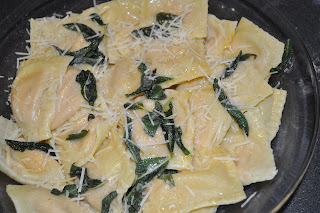That being said, working the night shift got me my topic for the evening. we definitely get some weird topics of conversation at night. Recently I was talking about what my kids were having for dinner...Hot dogs, baked beans, and french fries, and my co worker asked...what about brown bread. Funny my husband said the same thing before I left for work.
So what about Brown Bread.
If you are not from New England, you probably don't even know what it is. Essentially it is a molasses bread in a can. Why would anyone have bread in a can?!? I wondered that myself, I never really thought about it before, just enjoyed it every so often.
So for my non New England friends and for those you who have never tried Brown Bread, here's your history lesson for the week.
Brown bread has an interesting history. When the Puritans first settled in this area their preferred grain for baking was wheat, but they soon learned that corn grew much better in the New England soil. According to historians, the average farm produced 100 bushels of corn to 18 bushels of wheat. This ratio only got worse after a wheat fungus called "the blast" arrived. Ultimately, New Englanders needed to import wheat from other parts of the country, which made it quite expensive.
Although wheat didn't grow well here, a less popular European grain did - rye. Along with cornmeal, rye flour became the main ingredient for the bread baked by common people, and also gave it it's name, Rye and Indian. This name later became condensed to one word, Ryaninjun. The term Indian here refers to Indian corn, or maize.
The Puritans made Ryaninjun by mixing the two flours with some leavening and liquid, and forming them into dome shaped loaves (similar to modern soda bread). Ryaninjun loaves were baked on oak leaves or cabbage leaves, which imparted an interesting flavor. In the autumn small children were sent out to gather oak leaves specifically for baking bread.
In the 1820s, Ryaninjun also began to be called brown bread, and the two terms became interchangeable. At this time recipes began to include molasses, and called for steaming the bread in cylindrical molds rather than baking.
In the earliest twenty-first century the name Ryaninjun has disappeared, but many recipes still call for steaming the bread, often in coffee cans.
Information obtained from America's Founding Food: The Story of New England Cooking.
So there you have it, who'd a thunk bread in a can would have such an interesting history. If you really want to try it and you are not in the New England area to buy it, here's a recipe.
- Butter for greasing loaf pans or coffee cans
- 1/2 cup (heaping) all-purpose flour
- 1/2 cup (heaping) rye flour
- 1/2 cup (heaping) finely ground corn meal (must be finely ground)
- 1/2 teaspoon baking powder
- 1/2 teaspoon baking soda
- 1/2 teaspoon salt
- 1/2 teaspoon allspice
- 1/2 cup molasses (any kind)
- 1 cup buttermilk
- 1 teaspoon vanilla extract (optional)
- 1/2 cup raisins (optional)
- One metal 6-inch tall by 4-inch diameter coffee can, or a 4x8 loaf pan
Directions
1 You can either make this in the oven or the stove top, and you can either make this with a loaf pan or a metal coffee can. If you are using the oven method, preheat the oven to 325° and bring a large pot of water to a boil. If you are using the stove top method, set the steamer rack inside a tall stockpot and fill the pot with enough water to come 1/3 of the way up the sides of your coffee can. Turn the burner on to medium as you work.2 Grease a coffee can or small loaf pan with butter. In a large bowl, mix the all-purpose flour, rye flour, corn meal, baking powder and soda, salt and allspice. Add the raisins if using.
3 In another bowl, mix together the buttermilk and vanilla extract if using. Whisk in the molasses. Pour the wet ingredients into the dry and stir well with a spoon.
4 Pour the batter into the coffee can or loaf pan taking care that the batter not reach higher than 2/3 up the sides of the container.
5 Cover the loaf pan or coffee can tightly with foil. If you are using the stove top method, set the can in the pot, cover and turn the heat to high. If you are using the oven method, find a high-sided roasting pan that can hold the coffee can or loaf pan. Pour the boiling water into the roasting pan until it reaches one third up the side of the coffee can or loaf pan. Put the roasting pan into the oven. Steam the bread for at least 2 hours and 15 minutes. Check to see if the bread is done by inserting a toothpick into it. If the toothpick comes out clean, you're ready. If not, recover the pan and cook for up to another 45 minutes.
6 Remove from the oven and let cool for 10 minutes before putting on a rack. Let the bread cool for 1 hour before turning out of the container.
7 Slice and eat plain, or toast in a little butter in a frying pan.
I know this...In My Life some things I grew up with are just plain weird, but learning why, is pretty fun!











_EN.svg.png)

























